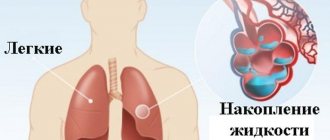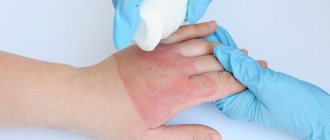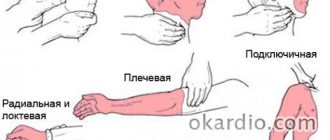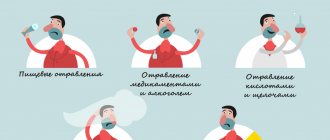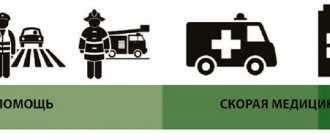Home — For the public
- Map of medical organizations
- Vaccination
- Clinical examination
- Fluorography
- Addresses and opening hours of clinics
- Emergency rooms
- Oncology
- Where to take an HIV test
- Healthy child's office
- Services
- Prevention of CVD
- Disease Prevention
- World Patient Safety Day
- Newspaper "Medical News"
- specialist
- School of Health
— Disease prevention
- HIV infection
- All about vaccination
- All about proper nutrition
- Hepatitis
- Flu
- Dementia
- Schoolchildren's health
- STD
- Tick-borne encephalitis
- Whooping cough
- Measles
- Legionellosis
- Meningococcal infection
- Oncology
- Acute intestinal infection
- Pediculosis
- First aid
- Pneumococcal infection
- Pneumonia
- Prevention of rabies
- Dependency Prevention
- Rotavirus infection
- Diabetes
- Cardiovascular diseases
- Injuries
- Tuberculosis
- Tularemia
- Physical activity
- Obstructive pulmonary disease
- Exotic infections
- Ecology
- Why is swimming in ponds dangerous?
— Cardiovascular diseases — First aid for stroke and heart attack
Timely and correctly provided first pre-hospital emergency care for the development of myocardial infarction and stroke is the factor that in many cases determines the outcome of these conditions that are dangerous to the health and life of the patient. Often, the lack of such correct assistance, which should be provided immediately after the development of these dangerous vascular accidents is suspected, becomes the cause of disability or death of people.
Doctors strongly recommend that all people at risk of developing these dangerous conditions know the first signs of stroke and myocardial infarction and be able to provide first aid. Almost every person should have such a reminder, because it can save someone’s life. Heart attack and stroke usually occur suddenly and at this moment it is necessary not to get confused! These simple steps can help save the patient and prevent the development of many complications or death.
Why does myocardial infarction develop?
Our heart is a tireless worker. In one minute it pumps more than five liters of blood and makes about one hundred thousand beats. The heart performs the most important functions for the human body:
- due to rhythmic contractions, it ensures blood flow through the blood vessels;
- saturates organs and tissues with oxygen;
- removes carbon dioxide and other harmful substances from the body.
With the development of myocardial infarction, the heart loses its ability to function normally, which often leads to disability and death.
The main cause of myocardial infarction is atherosclerosis, a chronic vascular pathology caused by impaired lipid and protein metabolism. During the disease, atherosclerotic plaques form in the lumen of blood vessels - dense formations of cholesterol, covered with fibrous tissue on top.
With certain changes in the body (stress, increased blood pressure), vascular spasm occurs, which often leads to rupture of an atherosclerotic plaque with the formation of blood clots. If this occurs in the heart muscle, then acute myocardial infarction develops. If in the intestines, then intestinal infarction, etc.
People with chronic diseases have an increased likelihood of developing myocardial infarction:
- diabetes mellitus;
- hypertension;
- coronary heart disease;
- varicose veins of the lower extremities.
Diagnostics
After the ambulance arrives, the patient, as a rule, undergoes an urgent electrocardiogram, according to the readings of which the development of a heart attack can be determined. At the same time, doctors collect anamnesis, analyzing the time of onset of the attack, its duration, pain intensity, its localization, irradiation, etc.
The following changes can be considered electrocardiographic criteria for the development of an attack:
- damage or arched growth of the st segment, which can merge with a positive t wave or even turn into a negative t wave;
- the appearance of a pathologically altered q wave with a decrease in the amplitude of the r wave. sometimes there may be a complete disappearance of the r wave with the formation of qs;
- the appearance of a negative, often symmetrically located T wave.
In addition, acutely occurring bundle branch block may be indirect signs of the development of a heart attack. Also, the diagnosis of myocardial infarction is based on the detection of markers of damage to the muscle tissue of the heart.
Today, the most convincing (obvious) marker of this type can be considered the troponin level in the blood, which will be significantly increased when the described pathology occurs.
Troponin levels may rise sharply in the first five hours after a heart attack and may remain elevated for up to twelve days. In addition, to detect the pathology in question, doctors can prescribe echocardiography.
Clinical options for the development of myocardial infarction
The classic form of myocardial infarction is accompanied by a severe pain syndrome of a compressive, tearing, burning nature. The pain is most often localized behind the sternum, but can also radiate to the left arm, left shoulder, lower jaw, and interscapular area. As a rule, the pain lasts more than 20 minutes and is not relieved by nitroglycerin within 5 minutes.
Other symptoms of classic myocardial infarction:
- increased sweating;
- psychomotor agitation;
- feeling of fear of death.
There are also atypical options for the development of myocardial infarction:
- abdominal form. In this case, the patient experiences heartburn, nausea, vomiting, pain in the upper abdomen;
- arrhythmic form. Characteristic signs are heart rhythm disturbances, a feeling of interruptions in the heart;
- asthmatic form. The main symptoms are shortness of breath, suffocation;
- painless form. It is characterized by the absence of pain or the presence of mild pain that occurs at varying frequencies. This form especially often develops in patients with diabetes mellitus and in people who have already suffered a myocardial infarction in the past.
Why is the painless form dangerous? First of all, the development of sudden cardiac death. In addition, if in the acute period a myocardial infarction occurs without clear clinical symptoms, then in the future this can lead to the development of chronic heart failure.
The painless form of myocardial infarction can be recognized by other signs. For example, a person may experience shortness of breath, increased fatigue, and exercise intolerance.
Clinical picture of atypical cases
Unfortunately, sometimes a heart attack develops in a non-standard way, complicating its diagnosis and early detection.
For example, some patients may experience the following hidden symptoms of narrowing of the coronary arteries:
- sensations of pain in the lower jaw, left arm or even leg, left side;
- the occurrence of pain in the epigastric region, with the addition of nausea, bloating, vomiting;
- some patients may simply not have enough air, in the absence of other symptoms.
Somewhat less frequently, during the attacks in question, symptoms similar to manifestations of completely different ailments may occur:
- an attack of the asthmatic type with the development of bronchospasm, pulmonary edema, severe shortness of breath, etc.;
- an attack similar to an exacerbation of pancreatitis - with the occurrence of nausea, profuse vomiting, general weakness, and abdominal pain;
- an attack of a neurological type, with the development of neurosis, a panic attack, with disorders of consciousness, vision, with the appearance of dizziness, headaches.
The described clinical picture should also force the patient to urgently call an ambulance - independent treatment in such cases is prohibited!
First aid for myocardial infarction
In providing first aid, the principle of the “golden hour” is very important, from the moment the symptoms of the disease appear until the patient is admitted to the hospital. In critical situations, even more rapid action is required. The severity of the condition during a heart attack depends on how much the lumen of the vessel is blocked by a thrombus. If occlusion (complete obstruction) of a vessel occurs, a critical condition develops. The patient has 20–40 minutes left, after which necrosis of the cardiac tissue occurs.
It is very important not to wait for the pain to subside or for the work day to end. If symptoms characteristic of a heart attack appear, you should immediately take the necessary medications and call an ambulance.
Before doctors arrive, a person with coronary syndrome should be provided with first aid.
Correct algorithm of actions:
- Place the person in a semi-sitting position. For example, you can put the patient in bed and place pillows under his back. A semi-sitting position reduces the load on the heart.
- Provide the patient with complete physical and mental rest, try to calm him down. Physical and emotional stress increases myocardial ischemia and increases the need for oxygen in the heart muscle.
- Free your body from constrictive elements of clothing - remove your tie, belt, unbutton your shirt collar.
- Create an influx of fresh air - open a window or vent.
- Give the patient half a tablet of aspirin to chew. This will reduce the area of the heart attack and reduce the risk of death.
- If possible, you need to measure the person's blood pressure.
- If you have high blood pressure, be sure to give a drug for hypertension, as well as nitroglycerin. Nitroglycerin capsules are placed under the tongue and sprayed under the root of the tongue as a spray.
First aid
The most dangerous stage of the disease is the first 5-10 minutes of an attack. It is important to properly help the person before the medical team arrives. First of all, you need to calm the sick person, sit him down or lay him down in a comfortable place. Your upper body should be slightly higher than your lower body and your knees should be slightly bent. It is necessary to ensure good air ventilation and free the person from constrictive clothing. It is important to understand that pain during a heart attack can be so intense that it can cause death. A person can die from painful shock. If a person has had heart problems for a long time, then most likely he will have a drug such as nitroglycerin with him. You need to put a tablet under your tongue to relieve the condition.
In some cases, the patient’s severe panic during an attack can seriously threaten his health. In this case, the person should be given some kind of sedative: valocordin or corvalol.
Best materials of the month
- Coronaviruses: SARS-CoV-2 (COVID-19)
- Antibiotics for the prevention and treatment of COVID-19: how effective are they?
- The most common "office" diseases
- Does vodka kill coronavirus?
- How to stay alive on our roads?
If a person has lost consciousness and breathing is barely palpable, you need to start cardiopulmonary resuscitation. There is no more than five minutes to save a person.
To start a stopped heart, a precordial blow is applied (a strong blow to the chest with the edge of the palm). After this, the pulse is felt; if it is absent, you need to start chest compressions and perform artificial respiration. You need to place a cushion from any available items under the victim’s neck. The patient's head should be thrown back as much as possible. If necessary, the oral cavity can be cleaned with wipes.
Rescue measures can continue until the sick person comes to his senses, but this should take 5-7 minutes. If the heart cannot be started during this time, then the person cannot be saved.
Complications
Complications of myocardial infarction are early and late. As a rule, early complications develop in the first hours of a heart attack during hospitalization or for several days after the attack. The occurrence of complications is significantly influenced by the timeliness of first aid and hospitalization.
The most common early complications include:
- disturbances in the rhythm and conduction of the heart, which in most cases are fatal;
- rupture of the heart muscle;
- development of acute left ventricular failure, which is accompanied by pulmonary edema.
The last stage of left ventricular failure is cardiogenic shock, in which myocardial contractility sharply decreases and the blood supply to all organs is disrupted. The condition is accompanied by a strong drop in blood pressure, a decrease in body temperature, pale skin, difficulty breathing, oliguria, and loss of consciousness. The probability of death with cardiogenic shock is 90%.
Late complications of myocardial infarction:
- early post-infarction angina. A person who has such a complication does not tolerate even the slightest physical activity. Any activity causes squeezing pain behind the sternum. Even simple self-care activities lead to pain. The pain is less severe than during a heart attack itself, but quite painful;
- chronic heart failure, which is accompanied by shortness of breath, edema of the lower extremities, enlarged liver, and the development of chronic left ventricular aneurysm.
Signs and symptoms
Timely diagnosis can save a person’s life, so it is extremely important to know all the main signs of myocardial infarction at an early stage of its development.
Clinical picture of a heart attack:
- sudden pain in the chest;
- feeling as if the chest is being squeezed from the outside;
- irradiation of pain to the shoulder, forearm, elbow;
- unpleasant shooting sensations in the neck, back, jaw;
- feeling of lack of air;
- sticky cold sweat;
- nausea or vomiting;
- dizziness;
- feeling tired.
For a more accurate diagnosis, we focus not only on subjective sensations, but also on the results of instrumental studies. The patient is referred for a cardiogram. The technique allows you to distinguish pathology from an attack of angina. The main ECG signs of myocardial infarction are ST segment elevation.
The main signs of a heart attack vary depending on the stage of the attack. It goes through five successive stages. The success of treatment and the favorable prognosis depend on the speed of care.
- Pre-infarction period. It can last 1-2 hours or several weeks. Initially characterized by mild pain. The duration of the attacks gradually increases.
- The most acute period. Lasts no more than two hours. Characterized by rapid death of cardiac tissue. The pain subsides, the pressure drops.
- Acute period. Lasts from 2 to 14 days. Necrosis is replaced by melting of the myocardium.
- Subacute period. Lasts up to 45 days. The main clinical signs of myocardial infarction subside. Connective tissue forms at the site of necrosis. The heart adapts to the new state.
- Post-infarction period. It can take up to six months. A full-fledged scar and granulation tissue appear on the muscle tissue.
Rehabilitation
a cardiologist twice a month . During the second year after the attack, it is necessary to visit a general practitioner once every four months. If necessary, each of these specialists can refer the patient to a rehabilitation center or sanatorium.
For successful rehabilitation, it is important for the patient to strictly follow all the doctors’ recommendations:
- take necessary medications. These may be statins, anticoagulants, antihypertensive drugs;
- maintain a balance between sleep, work and rest;
- walk in the fresh air more often;
- avoid stress. After a heart attack, a person should receive only positive emotions.
Pre-hospital emergency room
The standard for the arrival of an EMT team in the city is 10 minutes, outside the city limits - 20 minutes after registering a call with the dispatch service. If we take into account weather conditions, the epidemiological situation and the traffic situation, it is possible that the time may be exceeded (no longer than 10 minutes).
According to the protocol, the algorithm of the team’s actions upon arrival to the patient includes:
- Anamnesis collection (if possible).
- If necessary, perform resuscitation measures (ventilation, chest compressions, defibrillation).
- Conducting an examination and physical examination to assess the condition of the cardiovascular and respiratory systems.
- Registration of 12 leads ECG with repeat after 20 minutes.
Pulse oximetry (if saturation is below 95% - oxygen support by mask or through nasal cannulas 3-5 l/min.).- Determine the level of troponins I, T in the blood (if a portable test is available).
- Providing venous access.
- Actually emergency medical care:
- Nitroglycerin 0.5-1 mg every 10 minutes. In case of severe pain, intravenous drip administration under the control of SBP (not lower than 90 mm Hg);
- relief of an anginal attack with narcotic analgesics. Preferably, Morphine 2-5 mg every 10-15 minutes until the pain stops (total dose not exceeding 20 mg);
- "ASA" 150-325 mg chewed, if the patient did not take it before the ambulance arrived;
- conducting dual antiplatelet therapy - Ticagrelor 180 mg, in its absence, Clopidogrel is prescribed at a dose of 300 mg;
- short-acting beta blockers - Propranolol, Metoprolol;
- reduce the load on the myocardium by lowering blood pressure and correcting hemodynamic disturbances.
If possible, it is recommended to carry out thrombolysis therapy TLT (streptokinase, alteplase, actilyse) at the prehospital stage. If thrombolysis can be carried out within 2 hours from the onset of ischemic changes (optimally within 60 minutes), this can interrupt the development of necrosis during MI, reduce the affected area and significantly reduce mortality. TLT is not effective if more than 12 hours have passed since the onset of the painful attack. Also, the procedure is not performed in the presence of absolute contraindications: intracranial bleeding or hemorrhagic stroke over the past 3 months, malignant brain tumor, abdominal aortic aneurysm with a tendency to dissection, bleeding from the gastrointestinal tract during the last month, disorders of the hemostatic system.
All patients with ACS are hospitalized in the intensive care unit of a specialized cardiology hospital with the ability to perform emergency angiography and reperfusion interventions.
